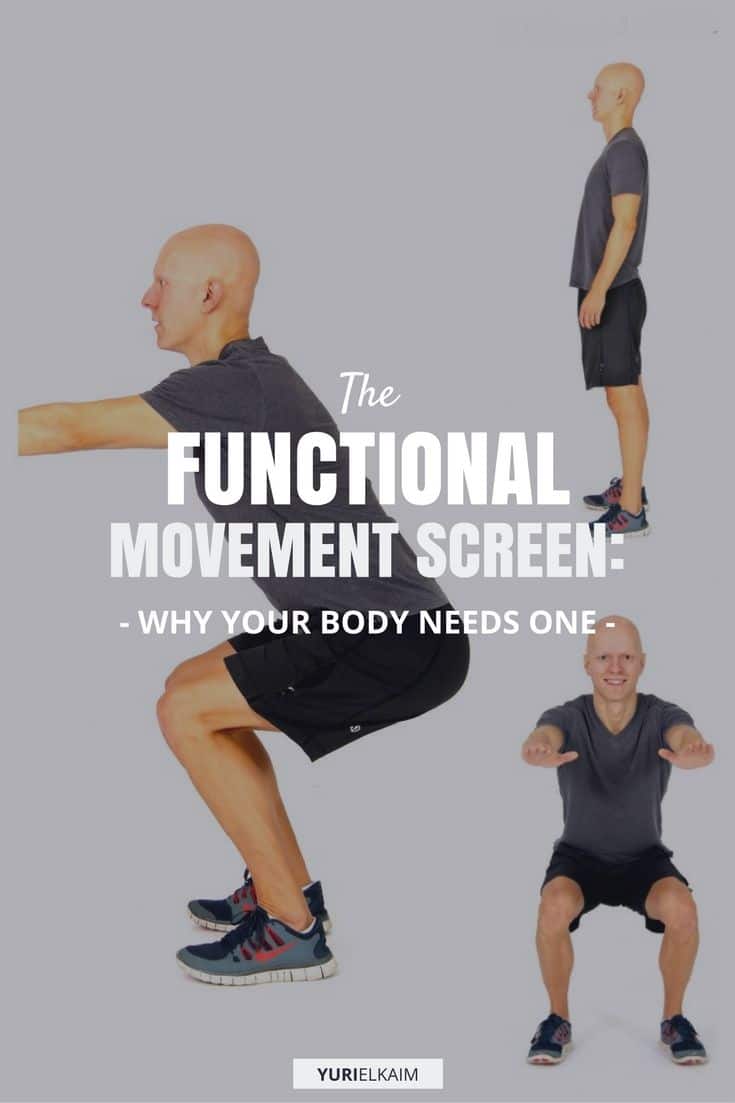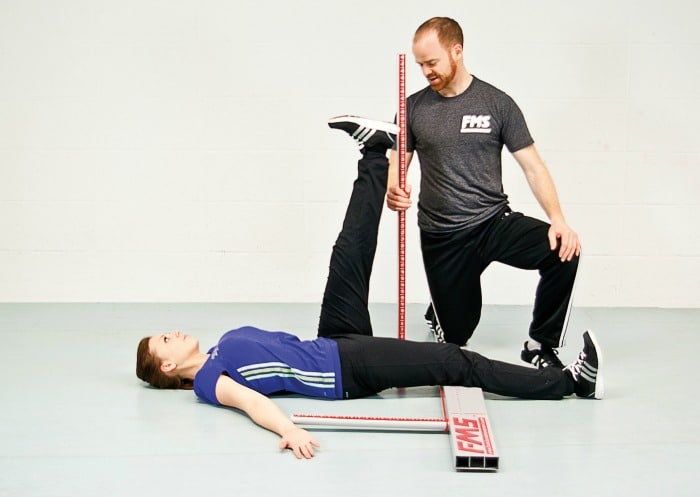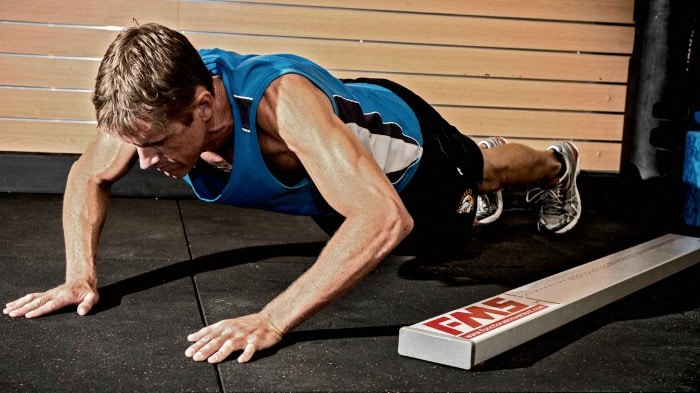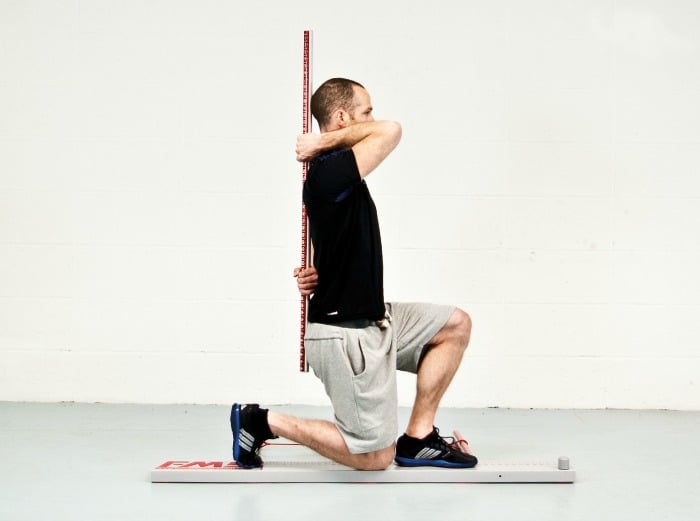In this article
When it comes to fitness, we often get caught up talking about the best ways to lose weight, gain muscle, and what kind of cardio burns the most fat.
And while those are important topics, the basics – foundational and functional fitness – seem to get lost.
The truth is, your foundation should be at the top of the topic list.
Because without a strong foundation, you’re not going to get the results you want – and you’re also setting yourself up for possible injury.
Why focus on foundation? And what does it even mean?
It’s How You Move
When we talk about foundation, we’re referring to the baseline movement fundamentals we should each have before beginning a workout program. It’s about how you squat, lunge, step up, twist, and more.
A great analogy is to think of our bodies as a house: one built on a foundation of sand will wobble and slide in the face of movement, while a house built on solid, concrete material will stand strong.
Having a great foundation means being able to perform functional fitness movements in a safe, efficient, and balanced way – without any compensations or asymmetry.
The problem is that often nowadays, we all want to work harder and faster – pushing our fat-burning and performance to the next level. But we do that without first mastering the fundamentals.
As you might imagine, this approach raises the risk of injury. It also works against weight-loss or muscle-building goals, since getting injured puts a huge kink in our progress.
The Better Approach
What we should do instead is first get a baseline of how our foundation is functioning. And then, once we are squared away, we can begin attacking our workout programs.
Research supports this approach to fitness, showing that exercises focusing on core muscle activation, neuromuscular control, dynamic stability, and static stabilization result in reduced lower extremity injury rates (1).
Basically that boils down to helping us have better body awareness and control over our bodies and how they move – and teaching them to move in a safe, strong manner.
How can we find out about our foundation?
Luckily, there’s a simple evaluation we can go through to analyze our fundamental movement patterns for weaknesses, referred to as the Functional Movement Screen (FMS).
The Functional Movement Screen
Developed in 2001 by physical therapist Gray Cook, the functional movement screen measures our fundamental movement patterns, motor control within these movement patterns, and helps determine if any asymmetry or deficiency is present.
Boiled down, it evaluates how you do basic movements – those squats and lunges mentioned above – and looks for any imbalances that might need correcting.
The simple grading system of the FMS was designed not only to assess movement patterns, but to develop specific programs based on the results.
It allows individuals and trainers to become aware of imbalances in movement before beginning a program, so they can first correct it.
Image courtesy Functional Training Magazin
While it is referred to as a “screen,” the functional movement screen is not a diagnostic tool for injuries, but rather an objective analysis of competency of movement. It is designed for any healthy person who is looking to start or improve their fitness.
It consists of a series of seven mobility and stability movements and three clearing tests that will reveal any imbalances in the body.
Whether you have less flexibility on one side of the body versus the other, or show less stability on one side, the FMS will reveal it.
While many will shudder at the thought of revealing their “weaknesses,” it’s important to know that the FMS is completely objective and is used by a wide range of fitness and health professionals.
In other words, there is nothing to be embarrassed about, and everything to gain from getting a screen.
Minimize Injury Risk
The biggest reason to get a FMS is to lower your risk of being injured.
Since good stability and mobility are the foundation of correctly performing functional movements, ferreting out any weaknesses here will help you avoid sustaining or worsening an injury.
Studies have shown the FMS to be a reliable way to identify increased risk factors for injury.
For instance, a study conducted on 38 NCAA Division II female collegiate athletes showed that those who got below a certain score had a 4-fold increase in risk of lower extremity injury.
The screening tool was able to predict injury in female athletes without a history of major injuries (2).
The FMS will also help you avoid worsening any weaknesses you do have. This is extremely important when we begin to talk about injuries, because often when we get injured it’s because we ignored an existing issue.
For instance, continuing to push through more advanced workouts without addressing an imbalance or weakness only serves to make it worse. And, even if the condition remains the same, it may hinder your forward progress at some point or another.
Compare this to if you had gotten a FMS, where you would have addressed the weakness and corrected it, then moved forward with a workout program.
You would have potentially saved yourself from an injury, and most likely progressed further and/or reached your goals faster than if you had not addressed the weakness.
Improve Functional Movement
The beauty of the FMS is its ability to analyze functional movement patterns for weakness, which then allows you to create a program that includes a corrective exercise strategy.
Image courtesy Functional Training Magazin
Why should you be excited about this?
As I mentioned before, using corrective exercises to overcome a weakness will enhance performance down the road by improving your entire functional foundation.
Once the foundation is perfected, we can work at a higher level with fewer chances of setbacks.
A study conducted by the University of Evansville showed this to be true by creating an off-season “intervention program” that addressed asymmetry in its football players.
Afterward players showed an improvement in the FMS score and an improvement in asymmetry during a deep squat (3).
Another study conducted on soldiers looking to return to the field showed how functional movement enhances performance, reporting “significant levels of improvement in performing the single leg hop, kick-ups and vertical jump,” after just six weeks of a training program based on functional movements (4).
How to Get a Screen
There are many certified experts available to give the FMS screen; simply search the FMS website for professionals in your area.
Since the screen only takes about 10 to 15 minutes to complete, I highly recommend that everyone looking to start a fitness regime or enhance performance get one. Even if the screen scores “normal,” you can have peace of mind knowing you’re progressing with less risk for an injury.
If your screen shows imbalances, however, don’t think of it as a setback.
Instead, it’s a chance to integrate corrective exercises into your program and come out stronger for it.
Build a Stronger Core Now
Want to sculpt a fit, rock-hard midsection?
You’ll want to check out these 7 unknown ways to get flat, toned abs, which I’ve outlined in the Flat Stomach Secret.
This “secret blueprint” will also detail little-known ways to shed belly fat.
You can download it right now – for FREE! – by clicking the banner below.




